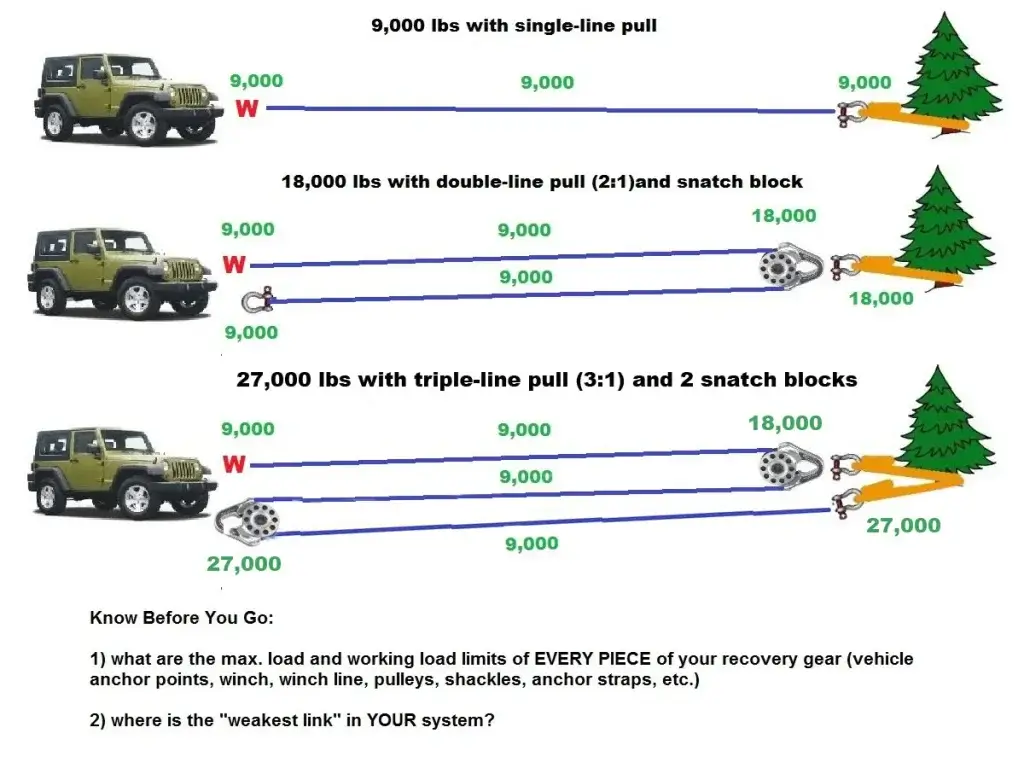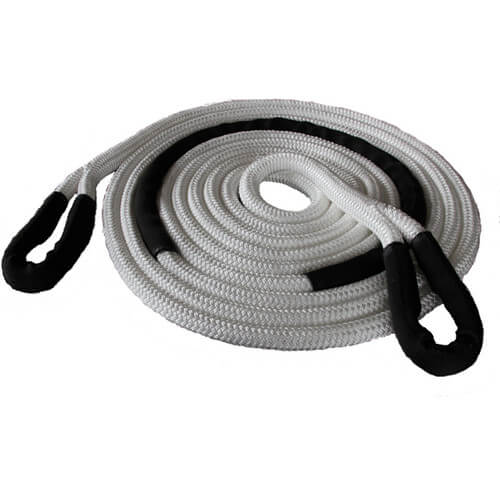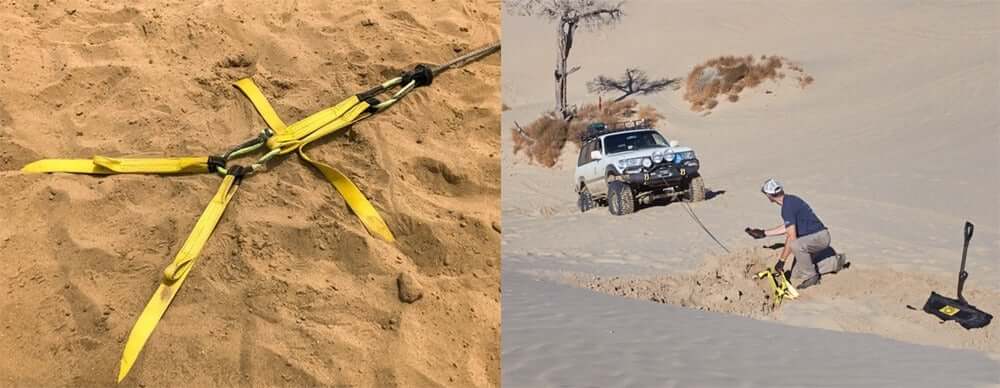Module 4 – Advanced Recovery Techniques
Recovery is where technical skill and safety awareness intersect.
Winching physics: A single-line pull uses the winch’s full drum speed but at lower pulling power. Adding a snatch block can double pulling power by halving line speed and spreading the load. However, every piece of gear must have a Safe Working Load Limit (WLL) greater than the maximum force generated.
Use the formula:

Required WLL = (Vehicle Weight × 1.5) ÷ Gear Ratio
For a 5,000 lb vehicle stuck in mud, that’s easily 7,500+ lbs of force, not counting suction resistance.
Kinetic recovery ropes (like Bubba Ropes) can stretch up to 30%, converting stored energy into a smooth pull that reduces shock loads. Never use them with a winch or static anchor — the snap-back force is dangerous.

Anchoring in barren terrain may require a “deadman” anchor — burying a spare tire or using specialized ground anchors to create a pull point. For best results, bury the anchor at a 30° angle toward the pull and at least 3 feet deep in loose soil.
When setting up a proper off-road winching system, the process usually begins with establishing a solid anchor point, whether that’s a tree, a rock, or another vehicle. From there, incorporating a snatch block can greatly increase efficiency, as it allows you to change the direction of the pull or even double the pulling power of your winch. This setup directly affects the line pull, reducing the strain on your winch and cable while improving overall control. By distributing and managing tension correctly, you create a safer and more effective recovery, protecting both your equipment and everyone involved in the process.

Always use damper blankets on recovery lines to reduce recoil risk if a line fails.
